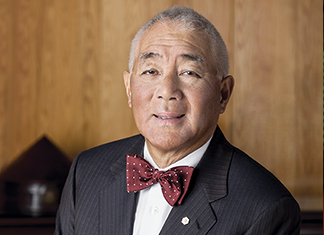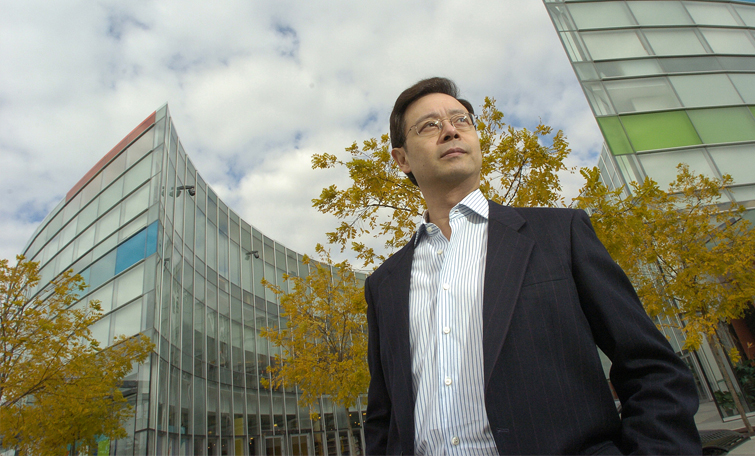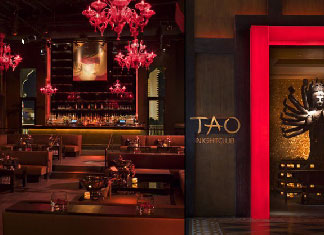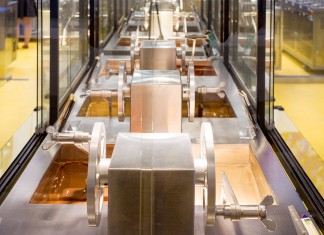Outer Space: the new frontier in tourism
- Caifu Magazine | by Caifu Global
- EN
“Space the final frontier”, was the opening line to the venerable Star Trek TV show, but it would seem 45 years on it’s not noble exploration driving the space race but tourism.
Flamboyant billionaire Richard Branson has dreamed of going into space since boyhood, and his self-funded Virgin Spaceship 2 may take him there, and possibly you too for the low, low price of 200,000 USD.
Well first you do have to get up there, and Bezo’s vertical takeoff and landing New Sheppard rocket expects to be taking paying passengers into low Earth orbit (LEO) as early as 2018. Ahead of both of those billionaires however is visionary innovator Elon Musk, who, with his Dragon spacecraft created the first commercially built vehicle to dock with the International Space Station (ISS) and return to Earth. His team at SpaceX also built the Falcon series of rockets (which lift the Dragon capsule into space) and has successfully completed several commercial satellite launches with them. As well since 2008 Musk’s Dragon spacecraft has been the resupply ship, under contract to NASA, for the ISS, and NASA has confirmed a manned version of the Dragon will be part of their future space program.
Ahead of both of those billionaires however is visionary innovator Elon Musk, who, with his Dragon spacecraft created the first commercially built vehicle to dock with the International Space Station (ISS) and return to Earth. His team at SpaceX also built the Falcon series of rockets (which lift the Dragon capsule into space) and has successfully completed several commercial satellite launches with them. As well since 2008 Musk’s Dragon spacecraft has been the resupply ship, under contract to NASA, for the ISS, and NASA has confirmed a manned version of the Dragon will be part of their future space program.
All of this demonstrates just how quickly private interests have developed spaceflight capability, the question is now that they have it what next?
“Tourism will be the greatest driver of the push into outer space.” says John Spencer of the Space Tourism Society (Spacetourismsociety.org) and a space architect who has done design work for NASA/Ames on the ISS. According to Spencer, and based on the multi-million dollar investments of billionaires like Branson and Bezos, it is the potential for tourism that will ultimately take us to the stars, not scientific research. Branson’s Virgin Galactic already bills itself as the first 'spaceline’ and recently rolled out the second of their two Virgin Spaceships, and they have been taking deposits for trips to sub orbital space for almost a decade now (approximately $80 million USD worth).
Branson’s Virgin Galactic already bills itself as the first 'spaceline’ and recently rolled out the second of their two Virgin Spaceships, and they have been taking deposits for trips to sub orbital space for almost a decade now (approximately $80 million USD worth).
Virgin Galactic even has their own space 'hub,’ Spaceport America in New Mexico. Described as “the world’s first purpose built spaceport.” Still, Branson has been accused of being unrealistically optimistic, promising in 2009 at the unveiling of Spaceport America passenger carrying commercial space flights as early as 2011.
Since then Branson has made and broken several more promised dates for maiden commercial trips aboard his Virgin Spaceship 2.
As noted, Jeff Bezos says he will start carrying paying passengers aboard a New Sheppard rocket as early as 2018 for (possibly) orbital spaceflights.
“Bezos will be first to supply sub-orbital flight,” says Spencer. He’s using a rocket system with more safety systems, a more direct approach. Virgin Galactic faces more challenges with their horizontal take-off and landing approach. This is all friendly competition though, Bezos and Elon are friends, and of course competition is good, it’s through competition that the best ideas win.” It was in fact a competition that kickstarted the entire commercial space industry, the $10 million USD Ansari XPRIZE to be exact. The Ansari family is a wealthy American-Iranian family involved in telecom. Anousheh Ansari, an engineer, encouraged the development of the XPRIZE for the first commercial manned spaceflight.
It was in fact a competition that kickstarted the entire commercial space industry, the $10 million USD Ansari XPRIZE to be exact. The Ansari family is a wealthy American-Iranian family involved in telecom. Anousheh Ansari, an engineer, encouraged the development of the XPRIZE for the first commercial manned spaceflight.
“In 2004 the XPRIZE Foundation awarded the first ever XPRIZE competition, which challenged teams from around the world to build a reliable, reusable, privately financed manned spaceship capable of carrying three people to 100 km above the Earth’s surface twice within two weeks,” describes Chanda Gonzales-Mowrer, Senior Director of the Google Lunar XPRIZE (more on that below).
The contest was won by Scaled Composites headed by aerospace engineer Burt Rutan with their SpaceShipOne, which became the prototype for Virgin Galactic’s Spaceship 2.
“When the prize was awarded, it reaffirmed that offering a prize for achieving a specific goal can stimulate entrepreneurial investment that produces a 10 times or greater return on the prize purse and at least 100 times follow‐on investment,” adds Mowrer.
With that in mind, you might ask, what does the Lunar XPRIZE hope to accomplish? First off, no, not a manned mission to the moon, the $30 million prize will be awarded to the first company that lands an (unmanned) spacecraft on the moon and disembark a rover that travels at least 500 meters. Or as Mowrer describes it, “Teams competing in the Google Lunar XPRIZE are designing new spacecraft, that are smaller, lighter, cheaper and more capable than any that have visited the lunar surface in the past. The technologies and systems involved in these spacecraft will probably be used for decades to come in other missions to explore the moon and destinations further afield.”
However while Google is challenging companies to send unmanned missions to the moon, Virginia based company Space Adventures is booking circumlunar trips at $150 million USD a seat.
Insomuch as neither Branson or Bezos has yet sent a space tourist into low Earth orbit how do they propose to send two people around the moon?
The answer is with an existing Russian Soyuz capsule, which will be launched into orbit where it will then dock with a booster powerful enough to send it on a five-day trajectory out and around the moon, and back to orbit (the entire mission is estimated to take 8-9 days).
Space Adventures says they have already sold one seat and if the other seat can be sold, plan to launch in 2018.
In the meantime just seven paying passengers have made it into space, all of them aboard a Russian Soyuz capsule for a trip to the ISS (also organized by Space Adventures) and yes they paid a hefty price to do so.
“In 2001 Dennis Tito, whom we know very well paid $10 million USD for the trip, that was fifteen years ago, hard to believe,” says Spencer. “And in 2009 the owner of Cirque Du Soleil (Guy Laliberte) paid $35 million USD. All in all the Russians have generated approximately $250 million since 2001 on space tourism and it’s almost pure profit (Anousheh Ansari has also travelled to space via Soyuz).
“The Soyuz capsule has four seats, and usually they only use two, so instead of sending them up empty they’re making money.”
If $35 million is a little over budget for you, then German based company, Space Affairs will organize a trip to the edge of space 22,860 meters (75,000 ft) in a Mig 29 for far, far less (and you can go now).
And what about the reclusive Musk? He has, so far, been more successful than Branson or Bezos with his Dragon capsule/Falcon rocket system. He is currently developing a manned capsule that could transport up to seven passengers to the ISS, although it would appear NASA wants that technology for its own uses.
But Musk is already looking much further out than low Earth orbit, or even the moon, he envisions someday transporting people to Mars.
But if you can’t wait a few decades to experience a trip to Mars, then if all goes according to plan, you may soon be able to experience a Mars simulation here on Earth, Las Vegas to be precise.
“Marsworld will be a geodesic dome, 1000 feet in diameter. The concept is that it will be a Martian city built on the rim of an impact crater. We’ll have light weight spacesuits for people to wear in the simulated Mars environment, with stunt shows and rover tours,” explains Spencer who is a principle involved with Marsworld as well as one of its main designers. The advantage of Marsworld over a real trip to the Martian surface is of course amenities. Marsworld will be a realistic simulation, but when you’ve had enough of walking along the red surface of Mars you can retreat to more Earthbound comforts.
The advantage of Marsworld over a real trip to the Martian surface is of course amenities. Marsworld will be a realistic simulation, but when you’ve had enough of walking along the red surface of Mars you can retreat to more Earthbound comforts.
“Las Vegas Marsworld will have everything you can do on the Las Vegas strip inside Marsworld. A casino, shows, spa etc. The idea is to make it very experiential. We create an entire backstory of how a city on Mars came to be, an elaborate vision of what might happen in the future, with actors and actresses to simulate an entire culture. Ultimately it’s a place for people to come and see and do things they would otherwise never do,” says Spencer.
On a more speculative note, he has also designed a space yacht, which could be yours for $5-6 billion. “long term, I think even space cruise lines could be very attractive for wealthy people who want an unique experience.”
Mowrer though, doesn’t think space tourism is that distant on the horizon, “In the near term space tourism is likely to be one of the main drivers for private commercial space activities beyond orbit.”
How is it though these commercial enterprises are doing what NASA does, or did, for hundreds of millions instead of billions of dollars? Mowrer explains:
“There are hundreds of thousands of engineers and technicians around the world already engaged in the construction and launch of satellites into Earth orbit. Although it involves many disciplines such as propulsion, materials, controls systems, all of which must work together well, it is in fact a relatively mature area of human technological activities. We know that because we’ve been doing this for decades.” She adds, “Overall, we view the Google Lunar XPRIZE and the efforts of our teams as complementary to, rather than competitive with, government space agencies. In most cases, the trends we are seeing in the so called “New Space” industry are private companies repeating the previous technical achievements of governments but doing so in a more cost-effective and sustainable way” That private enterprise is building on decades of research and development is one thing, but does anyone who’s paid any attention to NASA for the past 30 years believe, if left entirely to them, we would be talking about viable space tourism in 50 years let alone five? Spencer puts it more succinctly.
That private enterprise is building on decades of research and development is one thing, but does anyone who’s paid any attention to NASA for the past 30 years believe, if left entirely to them, we would be talking about viable space tourism in 50 years let alone five? Spencer puts it more succinctly.
“Private enterprise can just do things better than most governments.” To underscore that Bezos successfully launched his vertical takeoff and landing rocket last November to 100 km and back, landing gently in the Mojave Desert under its own power, ready to be refueled and launched again (although it is not yet powerful enough to take a person into space or reach orbit). Not to be outdone Musk more recently landed one of his Falcon rockets on a platform in the middle of the ocean. These projects or ones similar to them were on NASA drawing boards for decades but were eventually dismissed due to cost.
“What’s happening big picture right now is we have a dozen billionaires involved in the private space industry, and it’s an exciting, sexy, amazing development.”
To create his Falcon/Dragon rocket/capsule system it cost Musk an estimated $100 million USD, Bezo’s has spent $500 million in developing rockets through Blue Origin, and Branson’s (teamed with Abu Dhabi’s Aabar Investments) costs are somewhere between the two. A lot of money to risk for any of them, but clearly they are getting bang for the buck.
Spencer, who is based in L.A and does advisory work for filmmakers James Cameron and Steven Spielberg, says now more than ever we are seeing a greater mix of film fantasy and reality.
“Science Fiction inspires us to dream and inspires us to make it reality. The film The Martian was huge for us (Marsworld team) because with a worldwide box office of over $600 million USD it showed space exploration has much greater appeal than just a few science nerds. “Walt Disney was an early proponent of space exploration and the connection between entertainment and space will always be there, and what was science fiction 25 years ago is science fact today,” says Spencer.
“Walt Disney was an early proponent of space exploration and the connection between entertainment and space will always be there, and what was science fiction 25 years ago is science fact today,” says Spencer.
So whether your idea of fun is going to the moon, experiencing zero g’s, flying to the edge of space or walking along a crater in a simulated Mars environment, there’s a team working on making that happen… 'tourism, the final frontier’.















